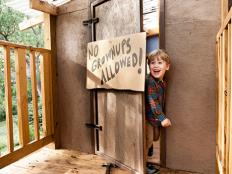
Remember the good old days when we could spend hours in the car and entertain ourselves without the need for loud sounds and bright screens?
While our handheld devices certainly have their value, it's always refreshing to take a break from the bright, flashy lights and loud noises and interact with our loved ones sitting right in front of us!
Whether you and your kids are spending time together at your kitchen table, on the couch or in the car on a road trip, you'll no-doubt find yourselves laughing and learning together with one of these simple, low-prep, screen-free games.
What are your kids' favorite games to play as a family? Let us know in the comments below!
Telephone Pictionary
Here's a game that's full of creative and innovative fun! The game uses reading and writing skills as each player is called on to write and illustrate simple sentences in alternating turns until their paper makes it back to them. Your kids, as young as first grade and well beyond their adolescent years, will enjoy playing along (parents, you'll love this game, too!).
It's best played with at least four players—perfect for getting the whole family involved—all you'll need is a paper and pen for each player.
How to play:
First, have each player write a simple sentence on the top of their page and fold it over so it can't be seen. Then, everyone will pass their sentence to another person in the group (it's best if you're sitting around a table and pick a direction). That person will uncover the sentence to read it, and then cover it back up. In the visible space below the covered sentence, they will draw a picture that matches what the other player wrote. When all players are ready, they pass the page to a new player who then writes a sentence that goes with the picture they see. They then fold the paper over again to cover up the picture the player before them drew and pass the page. The game continues in these alternating turns until your original paper is returned to you.
How to win:
There's no winning and losing in telephone Pictionary—just laughs! It's always fun to unveil the progression of each person's sentence to see where things changed along the way.
Sticks
Sticks is a game of simple addition math and strategy. It's great for even your littlest learners to help with number sense and addition, and older kids will enjoy thinking ahead about how to make the best move. And the best part—there's no additional materials needed!
While this is a two-player game, each round is quick, so players can easily rotate in and out of games. Competitive families can even set up a mini tournament bracket around determining the best of three, all the way to the championship round!
How to play:
This game, while simple in nature, is best described with pictures or in person (in fact, you'll find that once one kid knows how to play, they're quick to teach others). So, we're calling on some aid: Click here to read and see how to play Sticks, a finger counting math game, so you can play with your kids today!
How to win:
Get both of your opponents' hands out by adding numbers to their hand from your hands that make them exactly five.
Spot the Change
Memory games, from card matching to reproducing patterns or arrangements, are always a fun, engaging way to playfully pass the time. This game, Spot the Change, can be played formally with items around your house on a tray or informally while waiting in line or between siblings on long car trips.
Outside of a two-player minimum there is no requirement of materials or limit to the possibility this game holds!
How to play:
First, you give the guessing player a chance to observe something specific for a certain amount of time (10 to 30 seconds ranging for level of difficulty). This could be as focused as your appearance or items on a tray, or as broad as the look of an entire room. During the designated observation time, it's their job to note (and remember!) as many details as possible. Then, they close their eyes and you change one thing. When they open their eyes, it's their job to figure out what exactly you changed by comparing what they see to what they remember! Once the change is unmasked, players can switch roles and play again.
How to win:
Spot the Change doesn't have to be a competitive game, and is often simply played for the fun of it. However, if you're looking for a competitive twist, try timing the player looking for the change or counting their number of guesses.
Categories (aka 20 Questions)
See how much you and your kids know about each other and the world we live in through different categories (i.e. plants, animals, etc.)! This is a great game to practice deductive reasoning as players ask "yes or no" questions to figure out the specific "thing" another player is thinking of in a predetermined category. Since this game requires no additional supplies, it's an easy way to pass the time and challenge your kids' thinking!
Categories can be played with just two people, but if you have more, players can take turns asking the questions as they work their way to 20!
How to play:
First, players must agree upon a category. The typical categories are: plants, animals and things. However, you can narrow the categories or make up your own to make the game more approachable for younger players or allow for more specificity. For example, you may want to pick "ocean animals" as the category instead of just "animals," or "sports items" instead of just "things." Then a player thinks of something specific within that category. When they're ready, the other player(s) can start asking questions to narrow their search for what their opponent is thinking of. The only catch is that the person whose specific item players are trying to guess can only say "yes" or "no" in response. This player keeps track of the number of questions they've answered to 20.
The player(s) guessing have to keep track of the answers in hope of figuring out what the other person is thinking of before they run out of questions!
How to win:
The guesser wins by figuring out what the other person is thinking of with the information they gather from their first 20 questions. If they don't figure it out within 20, then the person thinking of the item wins!
READ THIS NEXT: 10 Sidewalk Chalk Games to Keep Kids Entertained for Hours









Discuss This Article